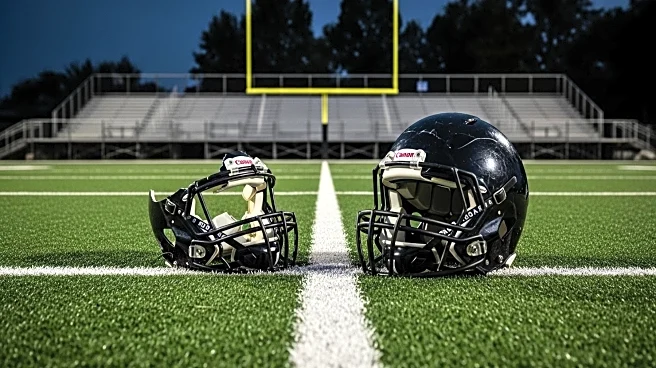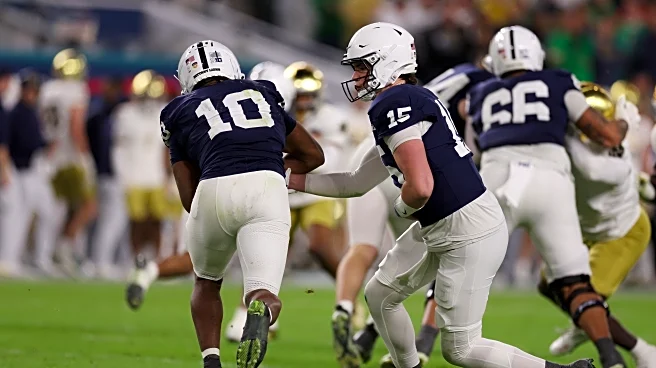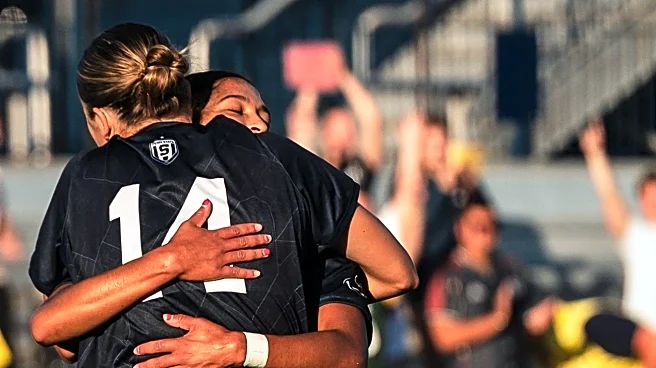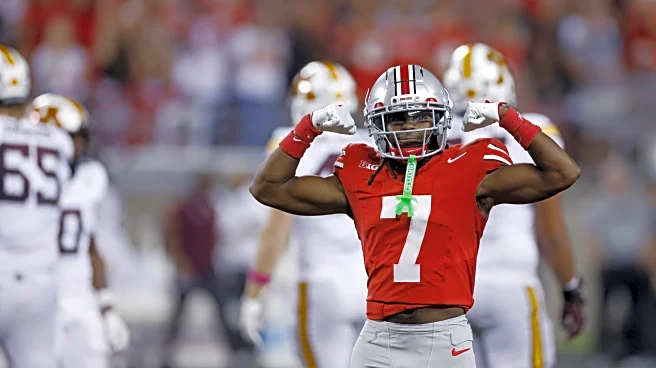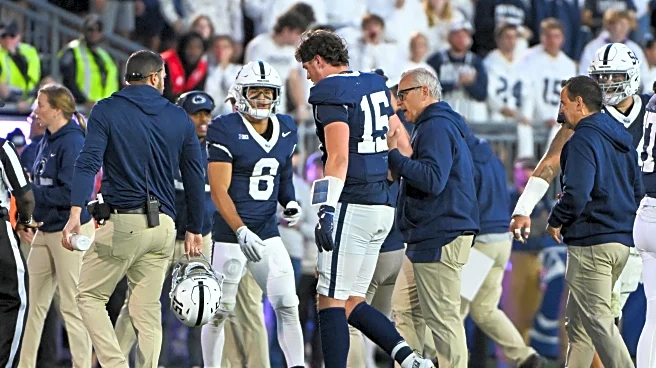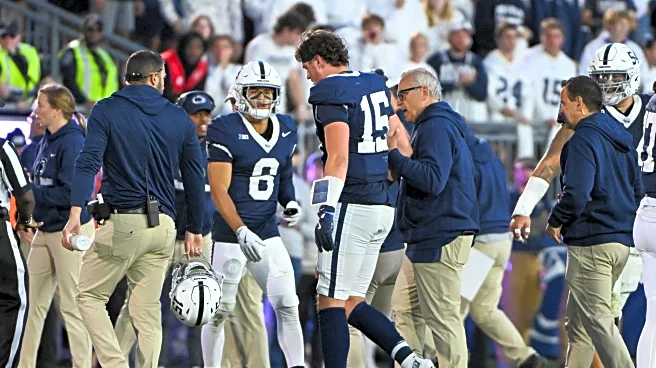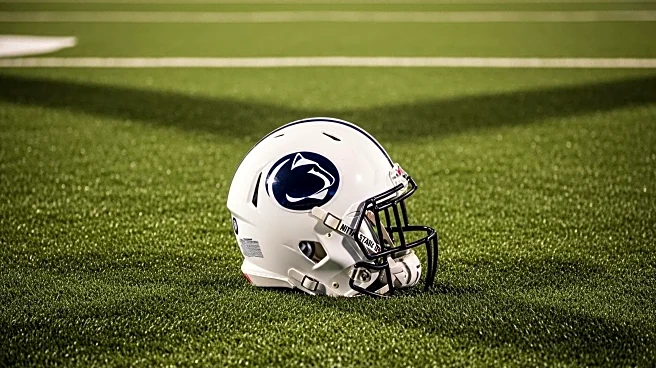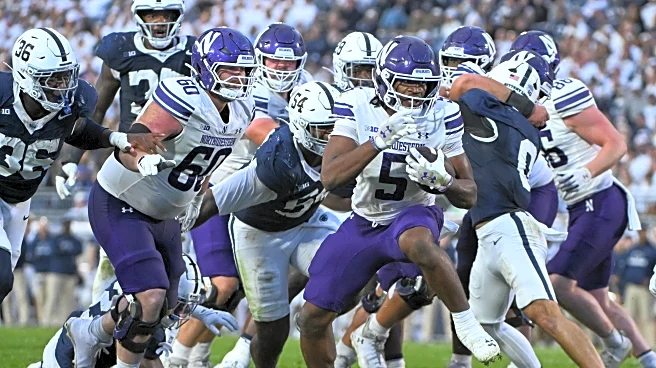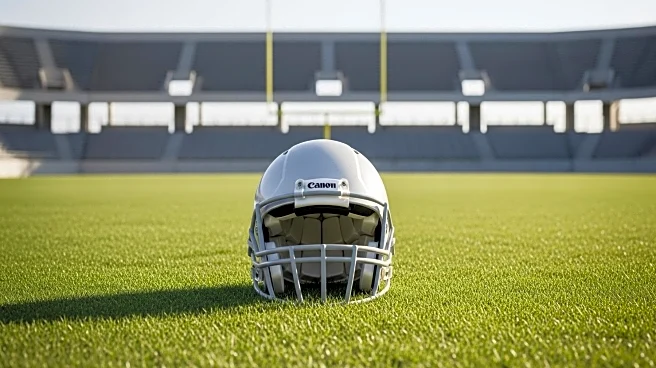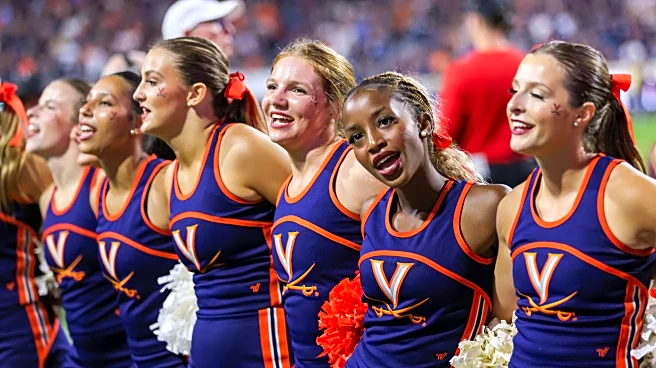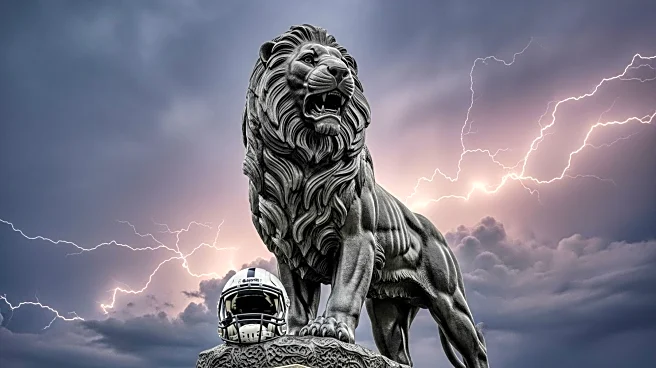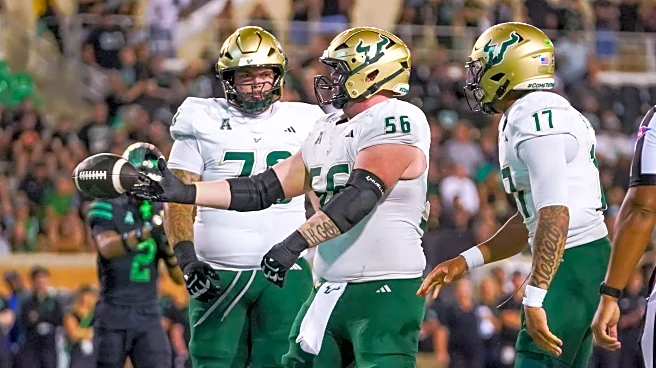What is the story about?
What's Happening?
Penn State quarterback Drew Allar will miss the remainder of the college football season due to a leg injury sustained during a game against Northwestern. The injury occurred late in the game, leading to Allar being helped off the field and subsequently carted to the locker room. This development marks a significant setback for Penn State, which has already experienced a challenging season with three consecutive losses. Allar, a senior, was a key player for the team, and his absence will require Penn State to rely on backup quarterback Ethan Grunkemeyer moving forward.
Why It's Important?
Allar's injury is a major blow to Penn State's aspirations for the season, as he was a pivotal figure in their offensive strategy. His absence could affect the team's chances of securing a bowl game appearance, given their current 3-3 record. The team will need to adapt quickly to the loss of their starting quarterback, which could impact their performance in upcoming games against strong opponents like Ohio State and Michigan State. The injury also ends Allar's collegiate career, leaving a gap in leadership and experience on the field.
What's Next?
Penn State will now turn to redshirt freshman Ethan Grunkemeyer as the starting quarterback. The team faces a challenging schedule ahead, including games against top-ranked teams such as Ohio State and Michigan State. Coach James Franklin has emphasized the need for the team to stick together and work hard to overcome this adversity. The focus will be on adjusting their strategy to accommodate the change in quarterback and to improve their performance in the remaining games of the season.
Beyond the Headlines
Allar's injury highlights the physical demands and risks associated with college football, raising questions about player safety and the impact of injuries on athletes' careers. It also underscores the importance of having a strong backup plan and depth in the roster to handle unexpected changes. The situation may prompt discussions within the team and the broader college football community about strategies to minimize injury risks and support injured players.
AI Generated Content
Do you find this article useful?
